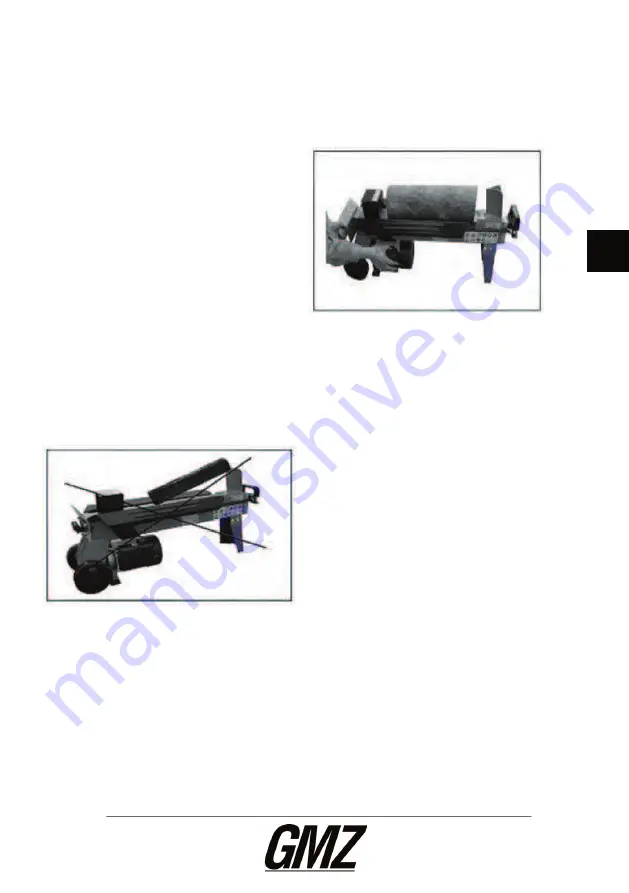
33
NO
SE
FI
GB
DE
DK
PL
ET
Air must be able to � ow freely through the
screw hole for as long as the log splitter is
in use. It will damage the hydraulic gaskets
if the system is not vented. Tighten the vent
screw before transporting the log splitter so
that it does not leak oil.
Use the log splitter in ambient temperatures
of between 5 and 40° C.
The log splitter must be connected to a 230
V and 50 Hz power supply, with a 20 A fuse.
Check for leakage in the hydraulic gaskets,
hoses and connectors before each use.
Check the oil level in the hydraulic oil tank.
Allow the motor to run for 15 minutes
before use in cold weather.
Use
Place the log to be split securely between
the guide rails (9). The log must be
horizontal. Never attempt to split logs at an
angle, and always split logs along the grain,
never across.
All lateral branches must be cut off before
splitting, and the top and bottom of the log
must be as straight as possible.
Do not attempt to split fresh wood. It does
not chip as easily and the wedge is more
likely to get stuck in fresh wood than in dry
wood.
Take hold of the control lever (6), and push
in the button at the side of the motor.
The log pusher (8) pushes the log towards
the wedge (1), which splits the log.
If the log pusher stays in the same position
for more than 5 seconds during the feeding,
you must stop the splitting. Turn the log if
necessary, or try to split it from a diff erent
angle. If this does not work either, then the
log is too hard and cannot be split by this
log splitter.
Release the control lever or button to stop
the log pusher. Release them both in order
to move the log pusher back to its starting
position.
Remove the split log from the work area
immediately.
















































